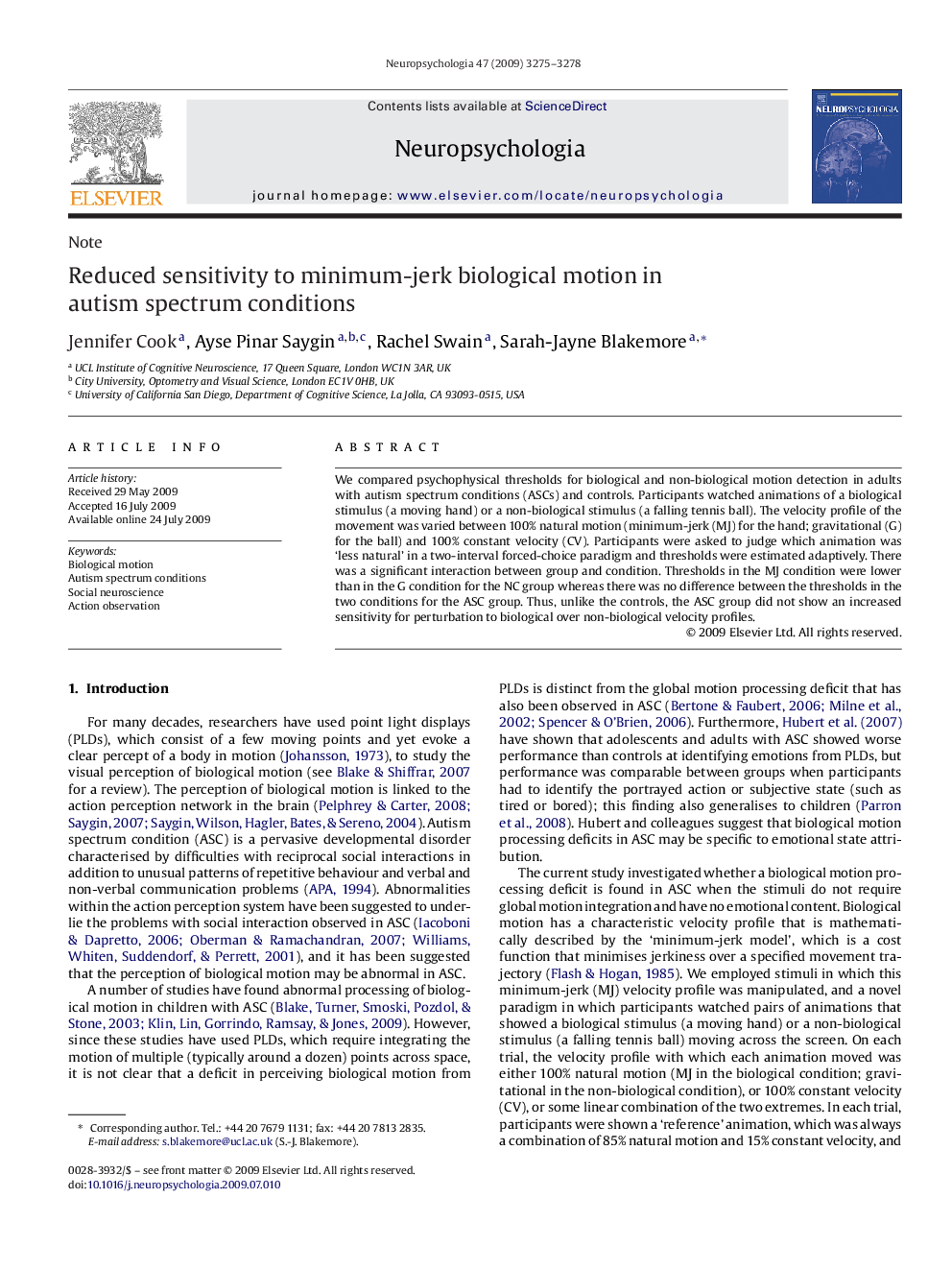| Article ID | Journal | Published Year | Pages | File Type |
|---|---|---|---|---|
| 10466248 | Neuropsychologia | 2009 | 4 Pages |
Abstract
We compared psychophysical thresholds for biological and non-biological motion detection in adults with autism spectrum conditions (ASCs) and controls. Participants watched animations of a biological stimulus (a moving hand) or a non-biological stimulus (a falling tennis ball). The velocity profile of the movement was varied between 100% natural motion (minimum-jerk (MJ) for the hand; gravitational (G) for the ball) and 100% constant velocity (CV). Participants were asked to judge which animation was 'less natural' in a two-interval forced-choice paradigm and thresholds were estimated adaptively. There was a significant interaction between group and condition. Thresholds in the MJ condition were lower than in the G condition for the NC group whereas there was no difference between the thresholds in the two conditions for the ASC group. Thus, unlike the controls, the ASC group did not show an increased sensitivity for perturbation to biological over non-biological velocity profiles.
Related Topics
Life Sciences
Neuroscience
Behavioral Neuroscience
Authors
Jennifer Cook, Ayse Pinar Saygin, Rachel Swain, Sarah-Jayne Blakemore,
